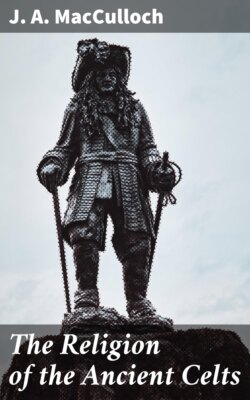Читать книгу The Religion of the Ancient Celts - J. A. MacCulloch - Страница 11
На сайте Литреса книга снята с продажи.
ОглавлениеFootnote 137: (return)
See pp. 274–5, infra.
Footnote 138: (return)
Courcelle-Seneuil, 80–81.
Footnote 139: (return)
See my article "Calendar" in Hastings' Encyclop. of Religion and Ethics, iii. 80.
Footnote 140: (return)
CIL v. 4208, 5771, vii. 927; Holder, ii. 89.
Footnote 141: (return)
For all these titles see Holder, s.v.
Footnote 142: (return)
There is a large literature devoted to the Matres. See De Wal, Die Mæder Gottinem; Vallentin, Le Culte des Matræ; Daremberg-Saglio, Dict. s.v. Matres; Ihm, Jahrbuch. des Vereins von Alterth. in Rheinlande, No. 83; Roscher, Lexicon, ii. 2464 f.
Footnote 143: (return)
See Maury, Fées du Moyen Age; Sébillot, i. 262; Monnier, 439 f.; Wright, Celt, Roman, and Saxon, 286 f.; Vallentin, RC iv. 29. The Matres may already have had a sinister aspect in Roman times, as they appear to be intended by an inscription Lamiis Tribus on an altar at Newcastle. Hübner, 507.
Footnote 144: (return)
Anwyl, Celt. Rev. 1906, 28. Cf. Y Foel Famau, "the hill of the Mothers," in the Clwydian range.
Footnote 145: (return)
See p. 73, infra.
Footnote 146: (return)
Vallentin, op. cit. iv. 29; Maury, Croyances du Moyen Age, 382.
Footnote 147: (return)
Holder, s.v.
Footnote 148: (return)
See pp. 69, 317, infra.
Footnote 149: (return)
For all these see Holder, s.v.; Rh[^y]s, HL 103; RC iv. 34.
Footnote 150: (return)
Florus, ii. 4.
Footnote 151: (return)
See the table of identifications, p. 125, infra.
Footnote 152: (return)
We need not assume with Jullian, 18, that there was one supreme god, now a war-god, now a god of peace. Any prominent god may have become a war-god on occasion.
